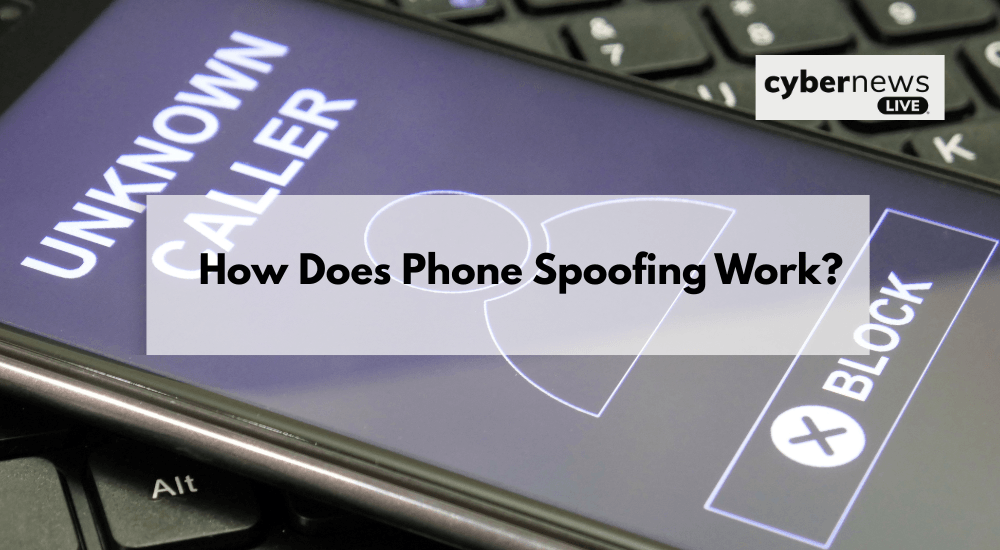
Phone Number Spoofing: The Trickery Behind Fake Caller IDs
Fraudsters are constantly devising new ways to trick people into answering phone calls. While most modern telecommunication devices are equipped with caller identification features that provide details about the incoming caller, a growing concern has emerged with the widespread use of caller ID falsification, commonly known as “spoofing.”
Phone number spoofing, or caller ID spoofing, is a deceptive tactic that manipulates the caller ID displayed on your phone.This makes the call appear to come from a trusted source, such as a local business, government agency, or even a friend, while it is actually from a fraudster. As digital communication becomes more sophisticated, so do the tricks employed by cybercriminals. Therefore, it is crucial to understand how spoofing works, its risks, and how to protect yourself.
Let’s dive deeper into phone number spoofing.
How Does Phone Spoofing Work?

The technology behind spoofing is surprisingly accessible. Scammers often use Voice over Internet Protocol (VoIP) services or specialized spoofing software to manipulate caller ID data. These tools allow them to choose any number they want to display, including local numbers, official-looking business lines, or even their own number. Here are some common methods and technologies scammers use for spoofing:
Choosing a Spoofing Method
The first step in phone number spoofing is selecting a tool or method that enables the caller to manipulate the caller ID information. Scammers use voice over IP (VoIP) systems that allow them to input any number they want to appear on your caller ID. These systems are popular because they are inexpensive, widely available, and often have minimal security checks.
Setting Up the Call System
Once a method is chosen, the scammer sets up the call using a VoIP platform, SIP client, or spoofing service. This usually involves logging into an online dashboard or app. They access a control panel to input configuration details, including the caller ID. These platforms often don’t verify the number entered, making it easy to manipulate what appears on the recipient’s phone.
Entering a Fake Caller ID
The next step for the scammer involves entering the fake number they want to display as the caller ID. This could be a random number, but it is often chosen strategically to resemble a local or familiar number to increase the chances of the recipient answering. In some cases, spoofers might input the actual number of a business, government agency, or even the victim’s own phone number. This can be especially deceptive and alarming for recipients.
Making the Call
After entering the spoofed caller ID, the scammer places the call through the VoIP system or a spoofing service. When the call is initiated, the caller ID information is bundled with the call data and sent across networks to the recipient’s phone. This process is fast and seamless. Since many telecom networks lack built-in caller ID authentication, the fake number is usually accepted without question.
Victim Receives the Call
When the call arrives at the victim’s phone, the caller ID shows the spoofed number. If the number looks familiar or mimics a known contact or institution, the recipient is more likely to answer the call. Once the call is answered, the scammer may attempt to deceive the victim by impersonating a trusted figure, such as a bank representative or a technical support agent. The goal is often to steal personal information, extract money, or install malware through social engineering tactics.
Optional Layer of Deception
In more sophisticated scams, scammers may use additional tactics to seem more convincing. One such method is “orange boxing,” where they play audio to mimic a second incoming call from another fake number. An accomplice might join the call, pretending to be another official to add urgency or credibility. This layered trick is meant to confuse the victim and increase the chances of success.
How to Protect Against Phone Number Spoofing
While it can be challenging to stop spoofed calls entirely, there are steps you can take to protect yourself:
Be Skeptical
Be cautious with calls or texts that use generic greetings like “Dear customer” instead of your name. Don’t assume the caller is who they claim to be. If someone says they’re from a company or government agency, don’t share any information. Hang up and contact the organization directly using a verified number from their official website.
Password-Protect Your Voicemail
Many people overlook voicemail security. Ensure that a strong password protects your voicemail account. Without this safeguard, scammers may be able to access your voicemail remotely, particularly if your phone number has been spoofed or compromised.
Avoid Answering Unknown Numbers
Do not answer calls from unknown or unexpected numbers. Spoofers can use caller ID to make the call seem local, increasing the likelihood that recipients will answer.
Do Not Stay on the Line
If something about the call feels suspicious or makes you uncomfortable, trust your instincts and hang up without delay. Prolonged conversations increase the likelihood of accidentally disclosing information or falling victim to manipulation.
Conclusion
Phone number spoofing exploits our natural tendency to trust the information displayed on our phones. While there is no foolproof solution, the best defense is to remain vigilant and practice strong security habits. The battle against spoofing is far from over, but staying informed, alert, and cautious can make it a far less effective tool for scammers.
Don’t let cyber threats catch you off guard. Follow Cyber News Live to get real-time updates, expert insights, and practical tips delivered straight to your inbox.

